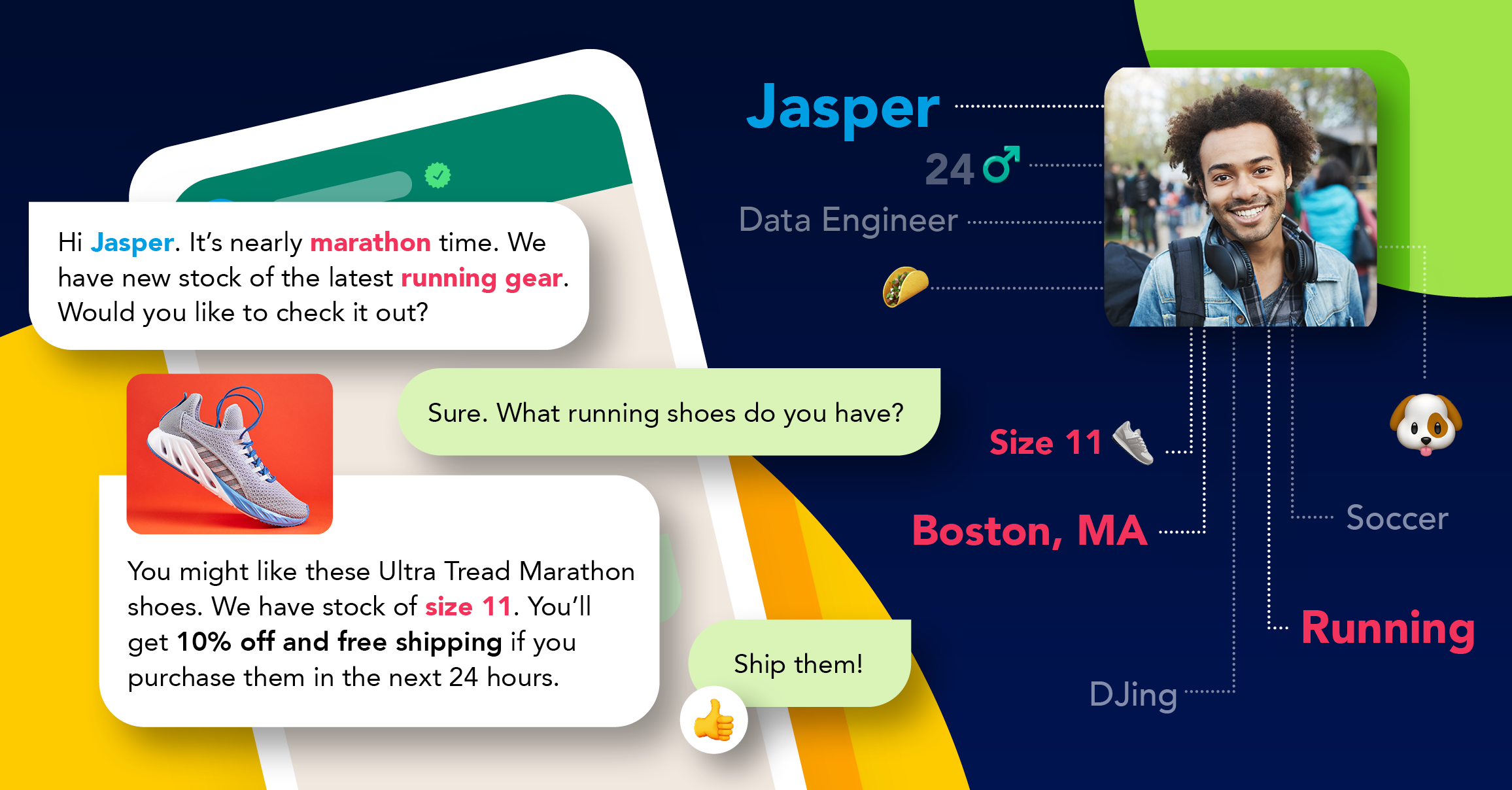
Future mobile technology
Whether you’re texting in-app, asking Siri a question or solving a frustrating customer query using a chatbot, the convenience that smartphones now offer consumers makes it easier to communicate wherever you are. Gone are the days when mobile technology was used for its original purpose: texting and calling. Today, it’s used to bring customers a more connected experience than desktop could ever offer.
Mobile is convenient for customers who prefer to do everything on-the-go without feeling restricted by their movements. The type of experience you offer your customers should be smart, enjoyable and quick. It needs to be better and less disruptive. For example, imagine the exact same thrill someone would get from visiting a site or communicating with an artificial intelligence (AI) chatbot on a desktop, and exaggerate that for mobile.
When you consider the latest mobile technology trends, there are so many factors that contribute to the overall user experience. Take Clickatell Touch, for instance, it truly makes customers’ lives easier with the appealing design and quick loading abilities for mobile. If brands want to move forward on mobile, they need to choose the trend that is most valuable to their customers.
Here are a few of the latest mobile technology trends worth knowing about:
Apps are going to become more proactive
AI is helping customers get what they want, on their mobile, in a matter of minutes. This sounds bizarre, but from the minute you open an app, you’ll start to see AI working its magic in the background. Take LinkedIn for example, the minute someone has sent you a message, they’ve already provided you with a variety of quick click answers to respond to the message. The answer options are linked to the context of the message, making sure that whatever you send back is directly aligned with what you possibly were going to say already, but in a well-written way.
As if mobile couldn’t already help us plan and organize our days, the introduction of proactive apps is going to allow you to access your most-used apps faster than ever before. These actions could be triggered by time, location or past behavior. Either way, your phone is getting to know you better.
Focus on optimizing for mobile speed
Making sure that your site is fit for mobile takes more than just cleaning up your site’s code and duplicating the experience across every channel. Developers need to spend excessive amounts of time working on page loading speeds to ensure that each page loads as quickly as possible. Your page loading time should be between one and five seconds to improve your bounce rate. If you want to improve customer loyalty and brand satisfaction, you’re going to need to take these aspects into account.
Understand what “mobile-first indexing” means for your website
For quite some time, Google has been working on ‘mobile-first indexing’ to help make websites more mobile-friendly. How it works is that Google indexes your website to help monitor and determine how it ranks your website. Features such as quick page loading, easy-to-use buttons, no need to zoom or side scroll, and the right photo and text appearance are a few of the features that will affect your rankings. In order to boost rankings on mobile, you’ll need to have a mobile site that’s responsive and different from your desktop site.
Improved mobile ecommerce
With more customers accessing their favorite stores from their mobile devices, it’s more important than ever to go mobile and improve your ecommerce offering. Having secure payment options in place on an easy-to-navigate site means that you’ll be able to offer customers the seamless experience they have on the desktop, anywhere and at any time. Businesses need to develop their customer experience by offering their customers the fast, convenient, Touch-like experience in everything that they do. This omnichannel, mobile-first approach has the ability to transform your business and give your customers the type of communication abilities and interactions they want and need.
Related: Mobile commerce is growing in popularity and here’s how you can take advantage
Personalized mobile experiences
On the back of the previous point, businesses need to invest more time in ensuring their customer experiences are more personalized on mobile. No matter which platform your customer wants to communicate with you on, you need to be ready to receive (and respond to) their messages. Omnichannel solutions are the way forward, delivering customized information according to each customer’s needs and via their preferred communication channel. It’s about an on-the-go approach that’ll improve the customers’ overall experience with your brand.
Mobile technology is the way of the future
The more intelligent mobile technology becomes, the more businesses will be able to leverage AI to respond to their customers directly according to their behavior, interests, needs, and wants. Businesses need to focus on adding value through mobile and making the experience less disruptive. Clickatell Touch can help you offer your customers the personalized communication options they want, in real-time. This live chat tool enables you to unify your response teams across inbound channels and offer your customers consistent, real-time messaging and on-demand customer service delivery.
Explore other articles
Step into the future of business messaging.
SMS and two-way channels, automation, call center integration, payments - do it all with Clickatell's Chat Commerce platform.








